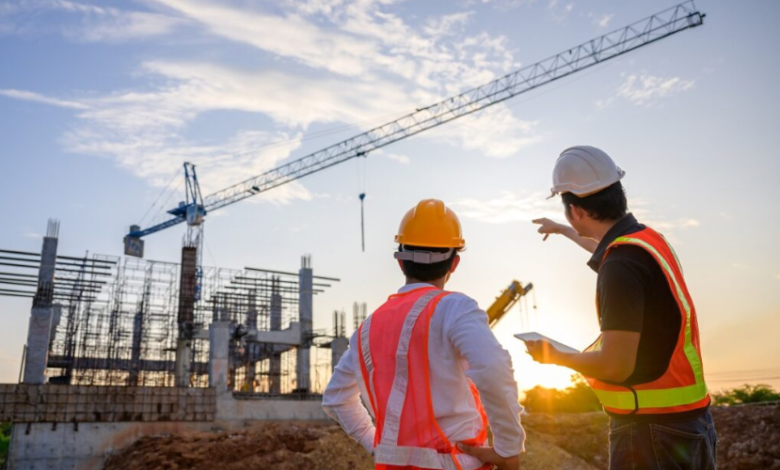Why Every Construction Project Needs a Pollution Prevention Plan

Construction projects play an essential role in shaping cities and infrastructure, but they also have the potential to harm the environment. Without proper planning, these projects can contribute to pollution, harming local ecosystems, waterways, and air quality. A Pollution Prevention Plan, often developed through a structured framework, is one of the most effective ways to mitigate such impacts. Here’s why every construction project should prioritize having a robust plan in place.
Ensuring Environmental Protection
Mitigating Harm to Ecosystems
Construction sites can inadvertently damage surrounding natural habitats. Activities such as excavation, material handling, and machinery operation often lead to the release of pollutants. A well-structured plan outlines specific measures to protect plants, animals, and other natural resources from contamination or disruption.
Reducing Soil Erosion
Without preventative action, loose soil and sediment can be easily carried away by wind or water. This not only weakens the site’s foundation but also leads to sediment pollution in nearby waterways. Pollution prevention plans detail strategies like establishing barriers, covering exposed soil, or implementing vegetative cover to reduce soil erosion effectively.
Protecting Water Resources
Stormwater runoff is a prominent issue on construction sites. Rainfall can wash chemicals, sediment, and debris into nearby rivers, lakes, or drainage systems. To prevent water pollution, a plan might include guidance on managing runoff, properly storing hazardous materials, and regularly testing water quality.
See also: Understanding The Importance Of Digital Marketing In Modern Business
Ensuring Regulatory Compliance
Meeting Legal Obligations
Environmental regulations vary by location but are typically strict when it comes to pollution prevention. Governments and local authorities require construction companies to meet specific standards to minimize environmental damage. A comprehensive Pollution Prevention Plan enables companies to address legal requirements and avoid penalties.
Avoiding Delays and Fines
Violations of environmental laws can result in costly delays, fines, or even project shutdowns. For example, if a construction site releases stormwater pollution without proper safeguards, authorities may impose significant penalties. Incorporating a plan from the start helps prevent compliance issues and ensures smooth progress.
Improving Project Efficiency
Preventing Site Contamination
A contaminated work area is a safety hazard and can drive up costs through cleanup efforts and lost work hours. Pollution prevention measures keep the site clean and safe, ensuring that the project stays on schedule and budget.
Enhancing Resource Management
A Pollution Prevention Plan emphasizes efficient use of materials and waste reduction. For example, recycling scrap material or reusing soil on-site are proactive steps that conserve resources while saving money. These practices contribute to both environmental and economic sustainability.
Bolstering Reputation and Public Trust
Earning Community Support
The environmental impact of a construction project often draws attention from local communities. Stakeholders and residents may express concerns about risks to their surroundings. A strong commitment to pollution prevention demonstrates environmental responsibility, fostering trust and cooperation from the community.
Attracting Clients and Investors
Clients and investors are increasingly prioritizing businesses that demonstrate environmental stewardship. Highlighting your Pollution Prevention Plan as part of your sustainability efforts can make your company more competitive and appealing to stakeholders.
Key Elements of an Effective Plan
Site Assessment
The foundation of any pollution prevention strategy begins with a detailed site assessment. This process identifies potential pollution sources, such as stormwater drainage points, areas prone to soil erosion, or zones where chemicals might leach into the environment.
Best Practices for Pollution Control
An effective plan incorporates specific methodologies to prevent contamination. These can include:
- Erosion Control: Installing silt fences or sediment traps.
- Water Management: Integrating retention ponds or filtration systems to treat runoff.
- Material Handling: Storing fuels, chemicals, and hazardous materials in secure and contained areas.
Training the Team
The workforce plays a critical role in implementing the plan. Training programs ensure that on-site workers understand pollution prevention protocols and their responsibilities for maintaining compliance.
Regular Monitoring and Adjustments
A Pollution Prevention Plan requires consistent oversight. Monitoring processes, such as routine inspections and water quality testing, allow for early detection of potential issues. For example, the guidance provided by a knowledgeable SWPPP inspector can be invaluable in ensuring that prevention strategies are effectively executed and maintained throughout the project duration.
Contributing to Long-Term Sustainability
Adopting and implementing Pollution Prevention Plans is not just about meeting immediate project goals. These plans align with larger efforts toward long-term sustainability by promoting greener practices. Businesses that prioritize environmental consideration contribute to global sustainability goals while setting the stage for future projects to follow responsible practices.
Construction projects can have significant impacts on the environment, but these effects can be minimized through proper planning and proactive measures. A Pollution Prevention Plan is not merely a regulatory checkbox—it ensures environmental protection, operational efficiency, and social responsibility. By incorporating site-specific strategies, monitoring progress, and fostering team awareness, construction companies can confidently move forward with projects while safeguarding the environment and strengthening stakeholder relationships.





